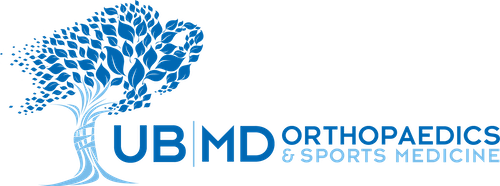If you’re a baseball fan, you might not recognize the term “UCL injury,” but you’ll certainly be familiar with the surgical procedure know as “Tommy John Surgery.” Read on to learn more about the ulnar collateral ligament (UCL), potential injuries, diagnosis and treatment.
What is the ulnar collateral ligament (UCL)?
The UCL is a ligament located on the inside of the elbow. Ligaments are durable bands of tissue that hold bones together and help control the movement of joints. A ligament performs as a tether between the bones. When the ligament is torn, the tether is too strong, and the bones move too much. This can bring about pain, an awareness of instability or looseness and an inability to work or play sports.
How do UCL injuries take place?
Overuse – The UCL can be torn by stress from using it too much (overuse). Such repetitive motion injuries to the UCL are most seen in athletes who use an overhand throwing motion. Baseball pitchers are especially prone to UCL injuries. The frequent high-intensity movement of the elbow joint can cause the ligaments to stretch or tear over time.
Trauma – The UCL may also be damaged if you fall on your outstretched arm. In this instance, the UCL may even rupture or get pulled from the humerus (the long bone in the upper arm), chipping a small piece of bone. This is known as an avulsion fracture, and it’s rare. This type of trauma is occasionally accompanied by an elbow dislocation or elbow fracture.
What are the signs of a UCL injury?
- A sudden “pop” or pain along the inside of the elbow, leading to the inability to keep throwing.
- Pain, from mild to severe, on the inside of the elbow after a period of heavy throwing or other overhead activity.
- Inability to grip with your hand or throw fast or with force
- Loose or weak feeling in your elbow
- Tingling or numbness in the pinky and ring fingers.
The instability as a result of a UCL tear may affect your ability to participate in sports that require throwing. However, it’s not likely to affect your daily living activities, such as carrying a bag of groceries. A UCL tear rarely prevents people from exercising, lifting weights, running or performing other non-throwing activities.
How are UCL injuries diagnosed?
Most of the time, a UCL injury is diagnosed by an orthopaedic provider who focuses on bones, muscles, ligaments and more.
- A physical exam will be performed on the elbow to see if there is any concern for injury.
- X-rays will be performed to check for injury to the bone. A tear in soft tissue would not show up on an X-ray.
- A magnetic resonance imaging (MRI) test may be performed to see if there is an injury to the ligaments in the elbow.
What is the course of treatment for a UCL injury?
Treatment will depend on the results of the testing. UCL sprain treatment varies depending on the severity of the injury. If you have a relatively minor injury to your UCL, your doctor may prescribe nonsurgical treatment. The injury may heal without needing an operation.
Nonsurgical treatment may include:
- Rest
- Icing the injury
- Over-the-counter medications to reduce pain and inflammation, such as ibuprofen or naproxen
- Prescription-strength medication for pain and inflammation if your doctor advises it
- Physical therapy
If your injury is severe or nonsurgical treatment isn’t successful, your doctor may propose surgery to repair the injury. In some instances, doctors can reattach the torn ligament. In more serious cases, you may need ligament reconstruction surgery.
UCL tears used to be considered career-ending injuries for pitchers and other athletes. Today, physicians can diagnose and, working with athletic trainers, treat these injuries well enough that athletes can fully recover.
UCL sprain recovery is determined by the severity of the injury and what treatment you require. Recovery with nonsurgical treatment can take up to several months.
What is Tommy John Surgery?
The procedure for UCL reconstruction is known as “Tommy John Surgery.” As most baseball fans are aware, the technique is named after baseball pitcher Tommy John who was the first patient to have the procedure performed in 1974. The surgery has come a long way since then. With Tommy John surgery, your doctor takes a tendon from another part of your body or utilizes a tendon from a donor. He/she attaches the new tendon to your ulna and humerus. It will then act as your new UCL. Parts of your original UCL may also be attached to the new tendon to strengthen it. After surgery, you’ll wear a brace and do physical therapy.
The length of recovery from UCL reconstruction surgery varies depending on how fast tissues heal. After surgery, rest is crucial to healing. When your doctor thinks you are ready, you’ll begin a customized physical therapy and pain management program designed to regain strength, range of motion and function to alleviate pain. Typically, recovery takes from nine months to a year and sometimes even longer.
How do I prevent UCL injuries?
UCL injuries are rare for people who don’t have occupational or athletic risks. Normal elbow movements normally don’t result in repetitive motion injuries to the UCL. If you engage in high-risk activities, such as pitching in baseball, talk to an athletic trainer about proper conditioning and appropriate form and movement to guard against elbow strain. Rest your arm if you feel pain or fatigue in the joint.,
If you’re concerned about UCL injury, contact the experts at UBMD Orthopaedics & Sports Medicine. Their elbow doctors can help you diagnose and treat any problems with your UCL.
